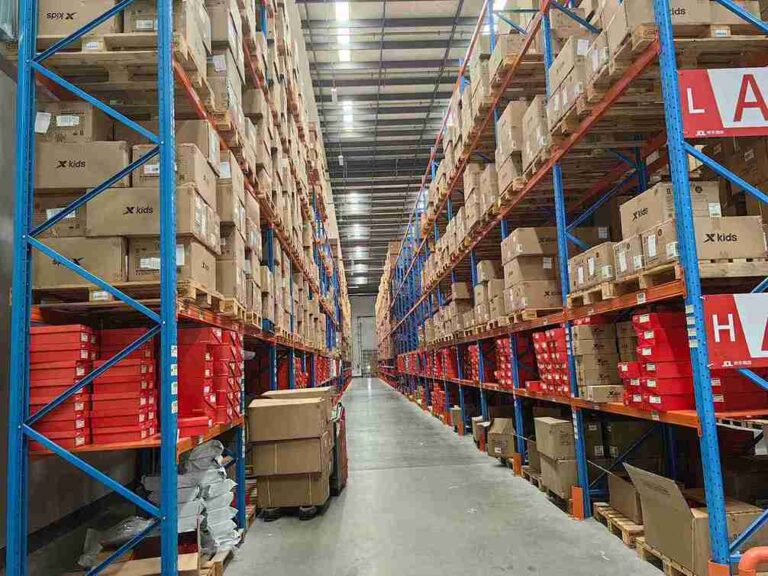📐 "First 50 Enterprise Queries Get Custom 3D Warehouse Design" Plan

Introduction: Why Regular Pallet Racking Inspections Are Non-Negotiable
Pallet racking inspection frequency is a critical factor in warehouse safety, operational efficiency, and regulatory compliance. A poorly maintained racking system can lead to catastrophic failures, worker injuries, and costly legal penalties.
This in-depth guide provides a data-driven approach to determining the optimal pallet racking inspection frequency for your facility. Readers will learn:
- How often pallet racking should be inspected (daily, weekly, quarterly, annually)
- Key damage indicators that demand immediate attention
- OSHA & SEMA compliance requirements for racking inspections
- Best practices to extend rack lifespan and prevent accidents
By the end, warehouse managers, safety officers, and logistics professionals will have a clear, actionable inspection schedule backed by industry expertise.

1. The Critical Role of Pallet Racking Inspection Frequency in Warehouse Safety
1.1 How Poor Inspection Frequency Leads to Disasters
Studies show that 85% of racking failures occur due to infrequent or inadequate inspections. The consequences include:
- Collapsed racks (causing inventory loss worth thousands)
- Forklift accidents (leading to worker injuries)
- Regulatory fines (OSHA penalties can exceed $15,000 per violation)
A structured pallet racking inspection frequency prevents these risks by identifying damage before it escalates.
1.2 The Financial Impact of Ignoring Inspection Schedules
Facilities that skip regular inspections face:
- 3x higher repair costs (emergency fixes vs. preventive maintenance)
- Increased insurance premiums (due to higher risk profiles)
- Unplanned downtime (halting operations for days)
Investing in a consistent pallet racking inspection frequency saves money long-term.
1.3 Compliance: OSHA & SEMA Regulations on Inspection Frequency
Both OSHA 1910.176(b) and SEMA Code 001 mandate:
- Daily visual checks by operators
- Formal inspections at least annually by certified professionals
- Documented records proving compliance
Failure to meet pallet racking inspection frequency standards can result in legal action.
2. How Often Should Pallet Racking Be Inspected? (The Ultimate Schedule)
2.1 Daily Visual Checks – The First Line of Defense
Who performs these? Forklift operators, warehouse staff
What to look for:
- Bent or twisted uprights (indicates forklift impact)
- Loose or missing bolts (leads to instability)
- Cracked beams (sign of overloading)
Best Practice: Use a checklist system to standardize daily inspections.
2.2 Weekly Supervisor Inspections – Catching Hidden Risks
A dedicated safety officer should conduct a detailed walkthrough weekly, focusing on:
- Beam deflection (measuring with a straightedge)
- Floor anchor integrity (ensuring racks are secured)
- Load capacity compliance (no overloading)
Why weekly? Some damage isn’t visible at a glance—weekly checks prevent gradual deterioration.
2.3 Quarterly Professional Inspections – Expert-Level Assessment
A SEMA-certified inspector should evaluate:
- Upright alignment (using laser levels)
- Base plate corrosion (common in humid environments)
- Rack stability under load (simulating stress conditions)
Data shows facilities with quarterly inspections experience 50% fewer rack failures.
2.4 Annual Certified Inspections – Mandatory for Compliance
OSHA requires at least one formal inspection per year by a qualified professional. This includes:
- Full structural assessment
- Load testing (if required)
- Detailed compliance report
Without this, facilities risk fines and liability.
3. Key Damage Indicators That Demand Immediate Action
3.1 Visible Damage: When to Halt Operations
- Bent uprights (>3mm deviation) = Replace immediately
- Cracked welds = Stop usage until repaired
- Severe corrosion = Assess structural integrity
3.2 Overloading: The Silent Killer of Racking Systems
- Beam sagging = Reduce load capacity by 20%
- Upright bowing = Reinforce or replace
3.3 Forklift Impact Damage: A Leading Cause of Failure
- Dented columns weaken load-bearing capacity
- Misaligned beams increase collapse risk
Pro Tip: Install impact guards to minimize damage.
4. OSHA & SEMA Compliance: What You Must Know
4.1 OSHA’s Stance on Pallet Racking Inspection Frequency
- General Duty Clause requires safe working conditions
- 1910.176(b) explicitly mandates regular inspections
4.2 SEMA’s Guidelines for Safe Racking
- SEMA Code 001 defines minimum inspection frequencies
- Only SEMA-approved inspectors should conduct annual checks
Non-compliance = Legal & financial consequences.
5. Best Practices for Maintaining Optimal Pallet Racking Inspection Frequency
5.1 Digital Tracking Systems for Inspections
- Cloud-based software logs damage history
- Automated reminders ensure no missed inspections
5.2 Training Staff on Proper Inspection Techniques
- Forklift operators must report impacts immediately
- Warehouse teams should know red-flag damage signs
5.3 Proactive Repairs vs. Reactive Fixes
- Replace damaged components ASAP
- Never “patch up” bent beams—replace them
Conclusion: A Strict Pallet Racking Inspection Frequency Saves Lives & Money
A well-defined pallet racking inspection frequency is not optional—it’s a legal, financial, and ethical necessity. Facilities that follow daily checks, weekly reviews, quarterly expert assessments, and annual certified inspections benefit from:
- Fewer accidents
- Lower repair costs
- Full compliance with OSHA & SEMA
Need a professional inspection? Contact a SEMA-certified racking specialist today.
Frequently Asked Questions (FAQs)
1. What’s the minimum pallet racking inspection frequency required by law?
OSHA mandates annual inspections, but weekly checks are industry best practice.
2. Can we perform inspections in-house, or do we need an expert?
Daily checks can be internal, but annual inspections require SEMA-certified professionals.
3. How do we document pallet racking inspections for compliance?
Use digital logs or inspection software to maintain records.
4. What’s the cost of ignoring proper inspection frequency?
Fines, lawsuits, and rack collapse repairs can cost over $100,000.
5. Does insurance cover damage from poor inspection practices?
Only if inspections were documented—negligence voids claims.




